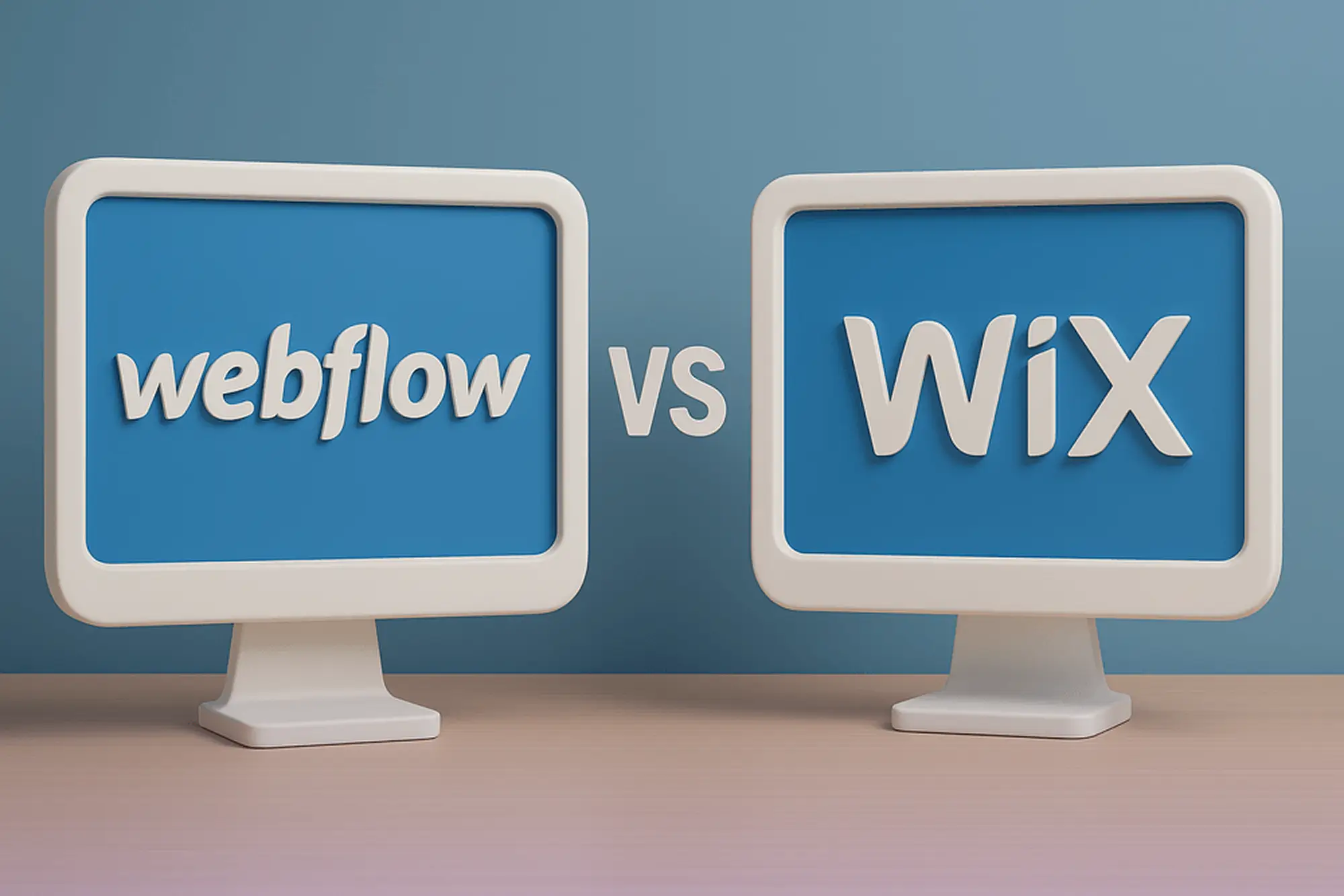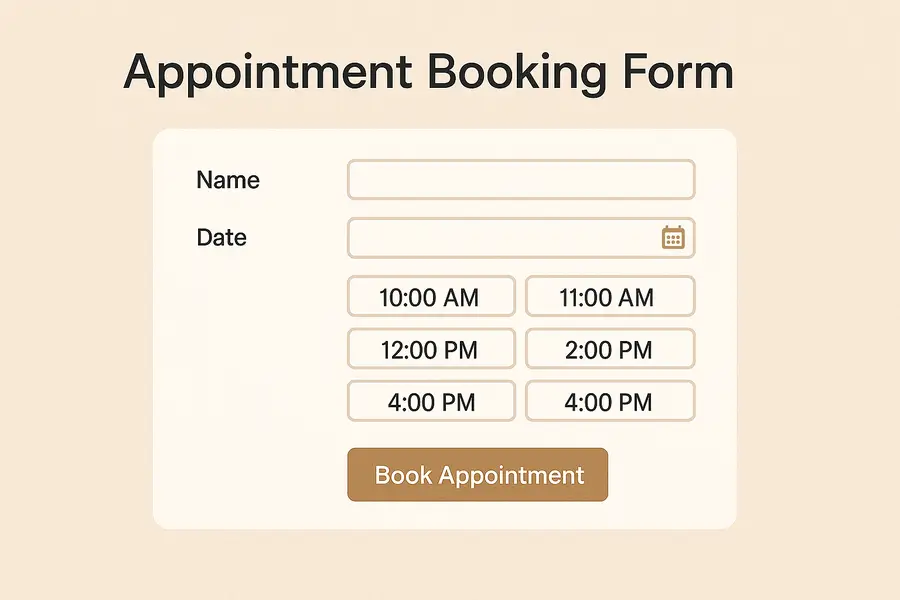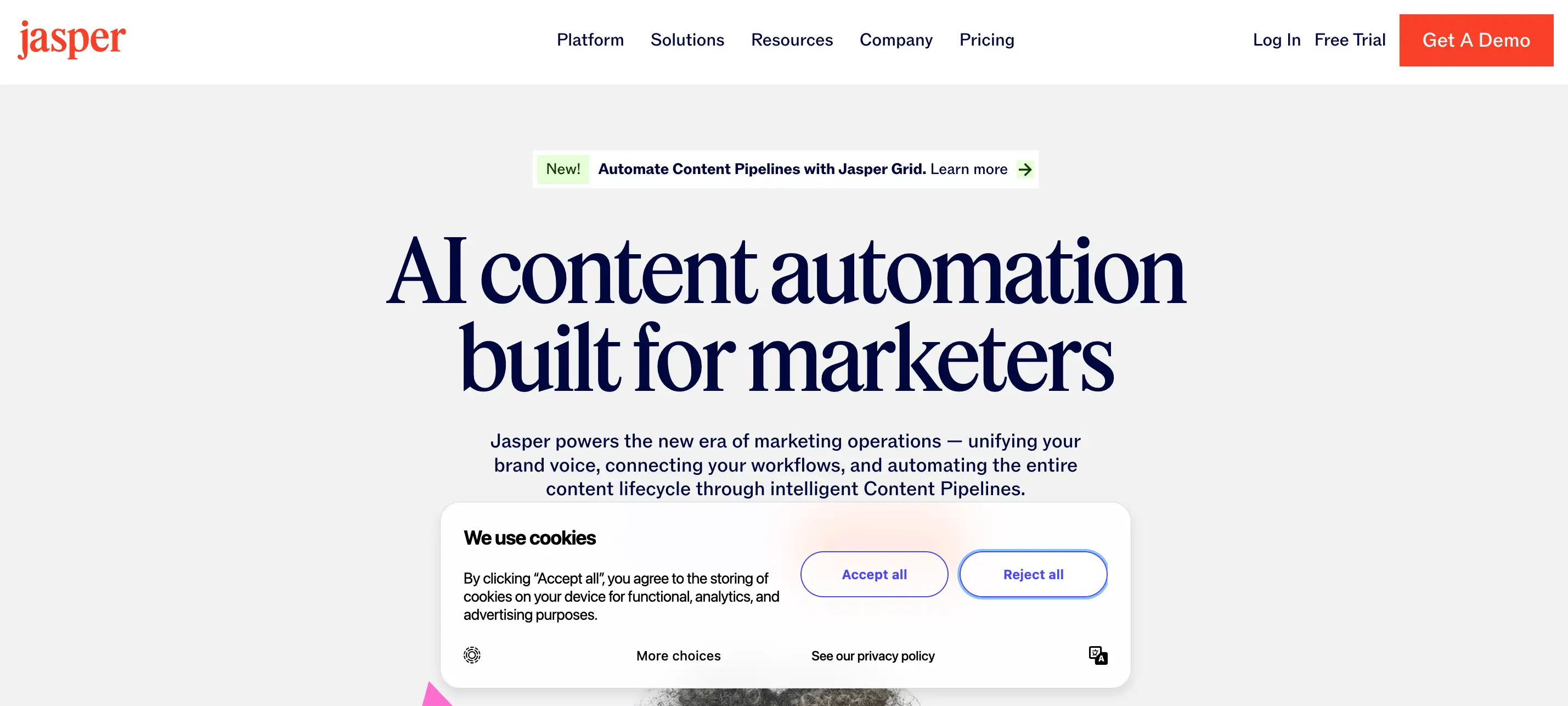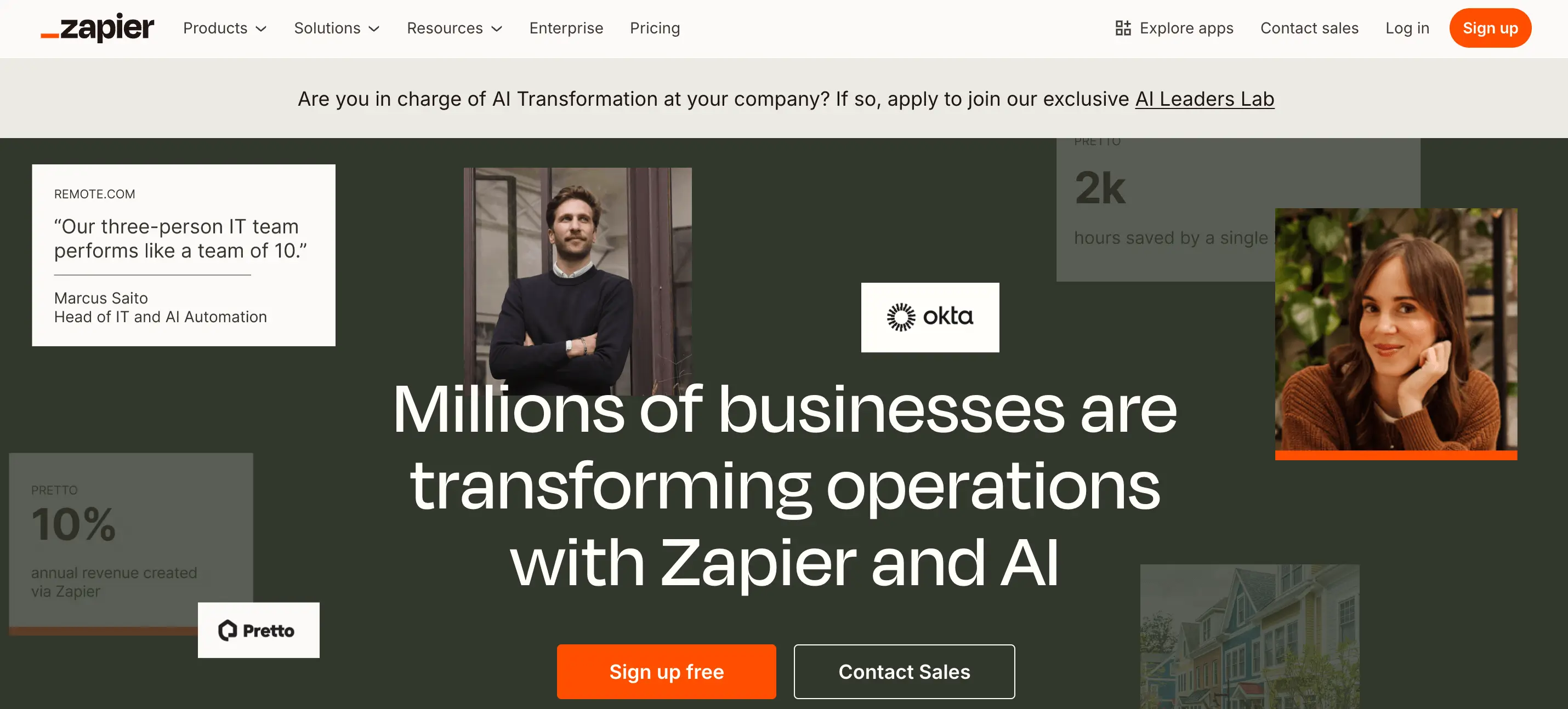Webflow vs Wix: Which Is Better for Building a Scalable Website?
Website
Development
Aug 7, 2025
0 min
When it comes to building a modern website, two names often rise to the top of the list: Webflow vs Wix. Both platforms offer powerful no-code solutions for individuals, businesses, and creators looking to establish a professional online presence. But if your goal is long-term growth and scalability, the differences between them become much more important.
In this article, I’ll compare Webflow vs Wix across key areas like design flexibility, content management, SEO features, and scalability, helping you decide which platform best fits your current needs and future goals.
What Are Webflow and Wix?
Webflow and Wix are both website builders designed to help users create professional-looking websites without writing code. However, they cater to different needs and levels of experience.
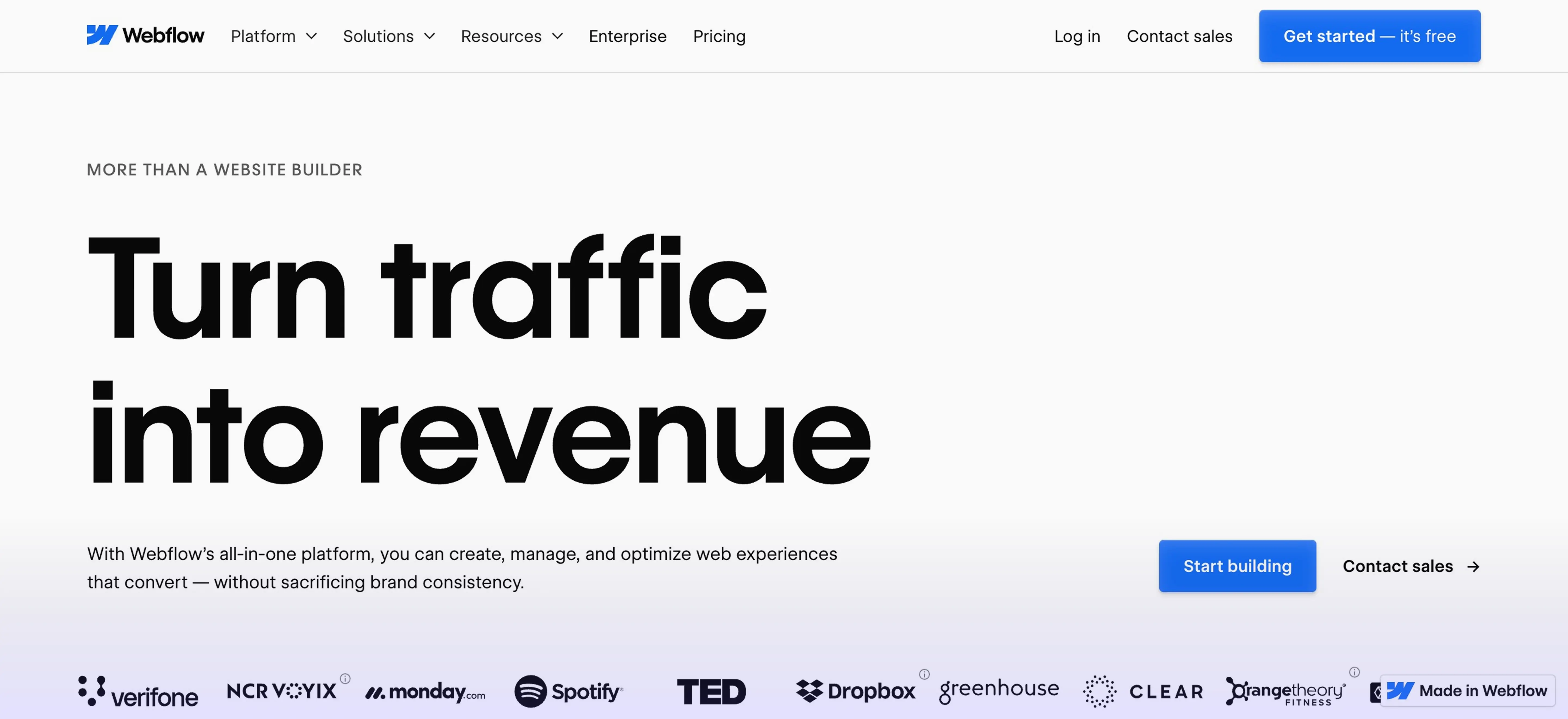
Wix is known for its user-friendly drag-and-drop interface that makes it easy for beginners to get started quickly. It offers a wide range of templates, built-in features, and automation tools, making it a go-to for personal projects, small businesses, and portfolios.
Webflow, on the other hand, is built with designers and developers in mind. It provides much more control over layout, animations, and site structure. With Webflow, users can create complex, custom designs that are cleanly coded and fully responsive. It's often chosen by businesses and agencies that need flexibility and scalability from day one.
While both platforms aim to simplify the website creation process, they differ significantly in their approach, capabilities, and long-term potential.
How Much Creative Freedom Do You Get?
One of the biggest differences between Webflow vs Wix lies in how much design control each platform offers.
Wix uses a drag-and-drop editor that allows users to move elements freely across the page. It's beginner-friendly and offers a wide variety of templates, but the customization options are limited once you go beyond the basics. Advanced layout adjustments or pixel-perfect design can be challenging, especially for users with a specific creative vision.
Webflow gives you far more freedom when it comes to design. It functions more like a visual development tool, letting you control every detail of your site’s layout, from grid systems to animations. If you have design experience or want to translate high-fidelity mockups directly into your site, Webflow makes it possible. You can also add custom code, giving you the ability to build highly tailored experiences.
If you want quick results with minimal effort, Wix may be enough. But for those seeking creative precision and a more scalable design system, Webflow clearly leads.
Which Platform Handles Content Better?
As your website grows, managing content efficiently becomes essential. This is where the differences between Webflow vs Wix become more noticeable.
Wix offers basic content management through its editor. You can create blog posts, product listings, and other static pages, but the CMS is not as flexible when it comes to custom content structures. For most small sites, it works well, but as your content needs become more complex, Wix can feel limiting.
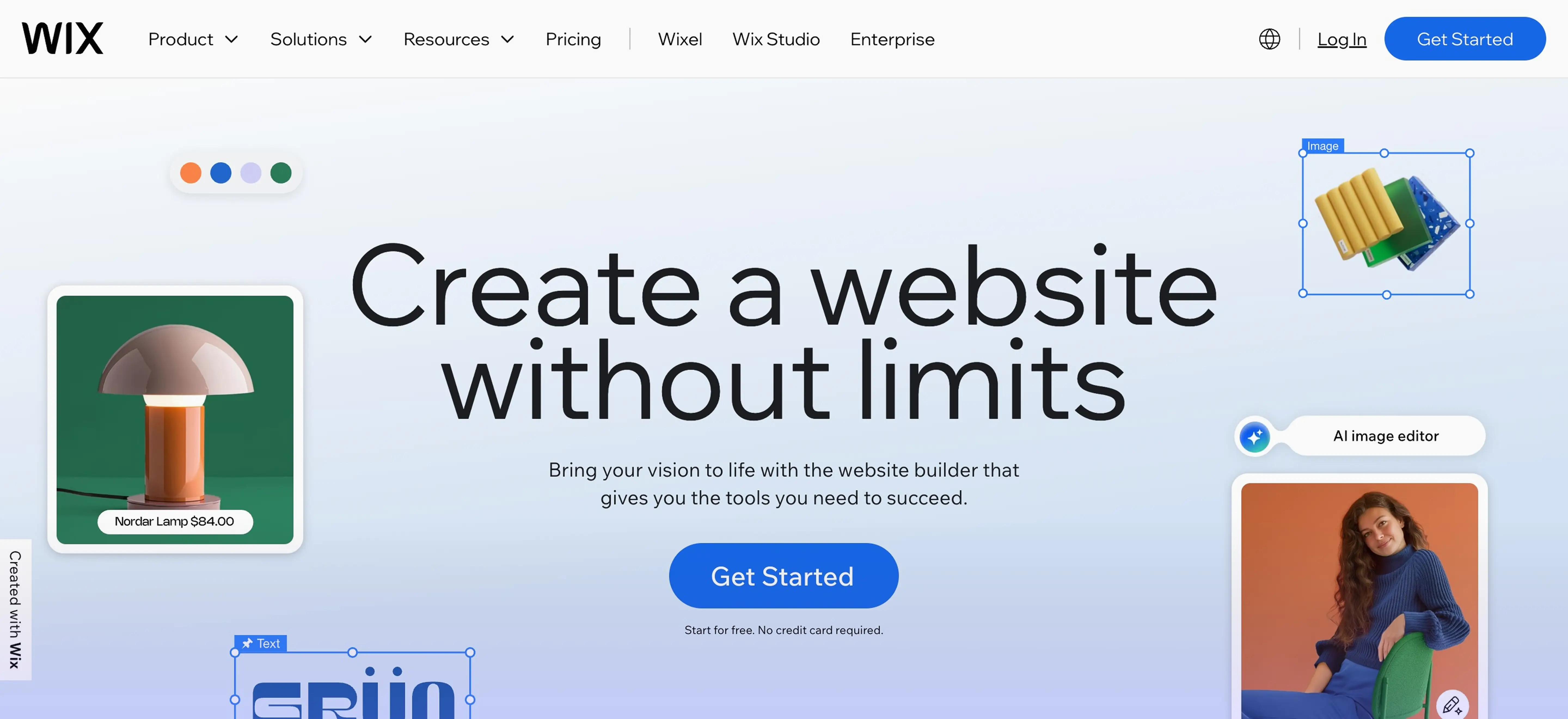
Webflow includes a robust built-in CMS that’s ideal for dynamic content. You can create custom content types, define your own fields, and use the CMS to generate collections like blog posts, team profiles, case studies, or product libraries — all from a single database. It’s especially useful for content-heavy websites that require consistency, scalability, and dynamic filtering.
For content creators, marketers, or anyone managing more than a handful of static pages, Webflow’s CMS offers more flexibility and power.
SEO Features and Website Speed
Search engine visibility and fast load times are non-negotiable for websites aiming to grow. Both platforms offer built-in SEO tools, but there are clear differences in control and performance.
Wix provides a user-friendly SEO setup that works well for beginners. You can edit page titles, meta descriptions, and image alt text, and there’s a guided SEO checklist to help you get started. However, limitations exist when it comes to advanced settings like structured data or custom redirects.
Webflow offers much more granular SEO control. Users can customize every SEO detail, including canonical tags, open graph settings, schema markup, and 301 redirects. Because Webflow generates clean HTML and CSS without unnecessary bloat, websites tend to load faster and perform better in search rankings.
In terms of performance, Webflow’s hosting is optimized for speed and scalability. While Wix has improved its infrastructure, it may still struggle to match Webflow’s efficiency on larger, content-heavy sites.
For businesses that rely on organic traffic and fast user experiences, Webflow is the more SEO- and performance-friendly option.
Is It Built to Scale with Your Business?
If you’re building a site with long-term goals in mind, scalability should be a top priority. The ability to grow your content, features, and user base without rebuilding from scratch is what separates a good platform from a great one.

Wix is ideal for smaller websites that won’t require significant structural changes over time. It handles simple e-commerce, blogging, and service-based sites well, but when it comes to larger content libraries or complex user interactions, it can become restrictive. Custom workflows, team collaboration, and advanced integrations are limited unless you use third-party tools.
Webflow is better suited for long-term growth. It supports structured content, third-party integrations, custom code, and advanced design systems, making it a go-to choice for startups, agencies, and enterprise-level sites. Webflow also includes features like version control, staging environments, and team access — all of which help support larger-scale operations.
When it comes to growing with your needs, the edge clearly goes to Webflow. Its flexibility allows you to scale your site alongside your business without hitting roadblocks.
Use case comparison like Wix vs Webflow highlights these differences best: Wix works for quick, templated solutions, while Webflow supports customization and scalability from day one.
Key Advantages and Drawbacks
Webflow Pros
- Full design control with pixel-perfect precision;
- Robust CMS for dynamic content;
- Clean code output for better SEO;
- Scalable structure ideal for growing businesses;
- Advanced features like custom code, staging, and team collaboration.
Webflow Cons
- Steeper learning curve for beginners;
- Higher starting price compared to Wix;
- More technical setup for e-commerce and apps.
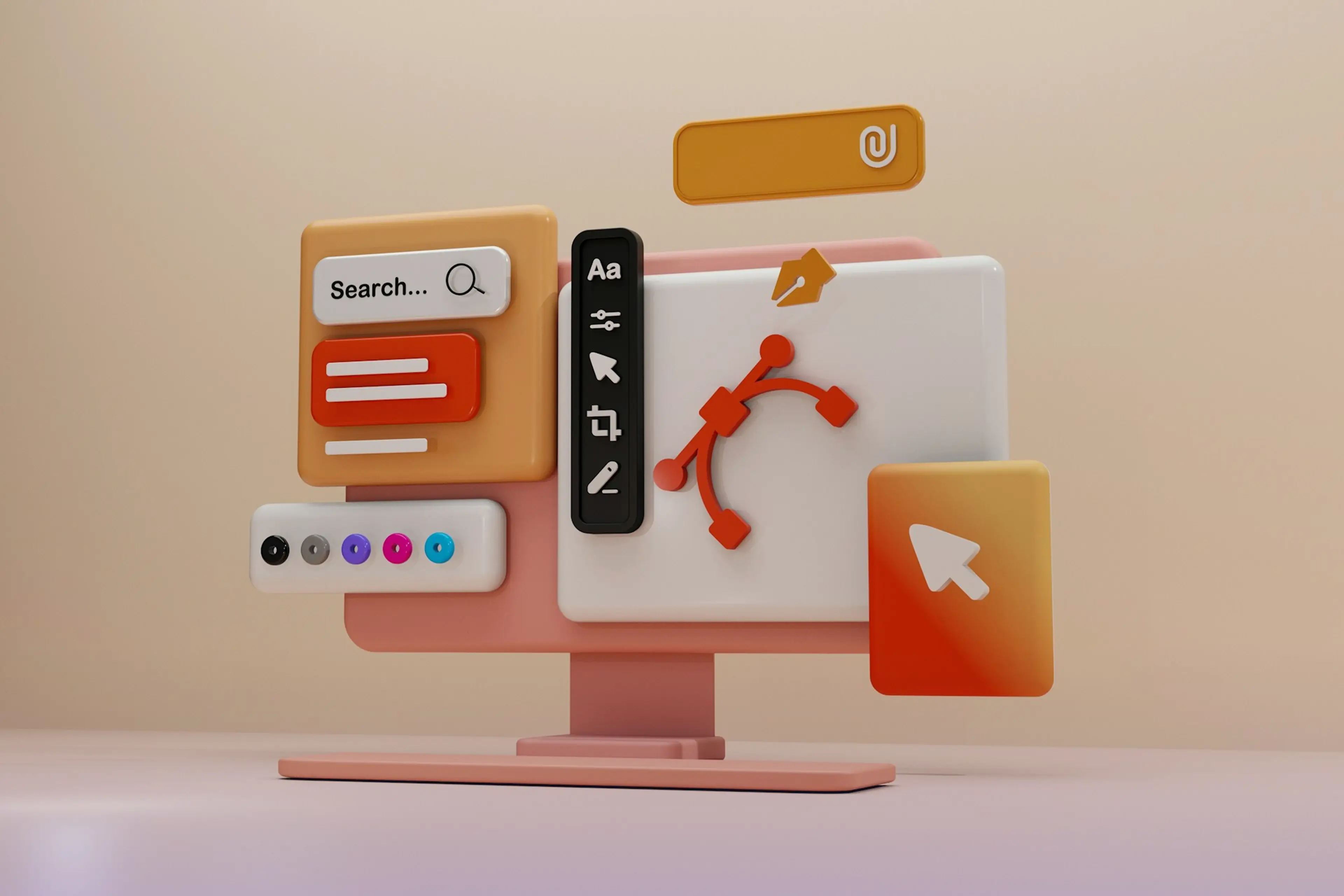
Wix Pros
- Easy-to-use drag-and-drop editor;
- Wide range of templates and built-in features;
- Affordable starter plans;
- Ideal for personal sites and small businesses.
Wix Cons
- Limited design flexibility;
- CMS is basic and not ideal for scaling;
- Slower performance on complex or large sites;
- Advanced features often require third-party apps.
Conclusion: So, Which Should You Choose?
Both Webflow and Wix are strong website builders, but they serve different needs. Wix is a great starting point for small websites, personal projects, and users who want a quick setup with minimal effort. Webflow, on the other hand, is built for those who need more design flexibility, control over content structure, and a platform that can scale alongside their business.
If you're looking to create a website that not only looks great but is also built to grow, investing in a more customizable and scalable solution can save time and effort in the long run.
Need help designing and developing a website that fits your goals? I can help bring your vision to life with a professional, high-performing site tailored to your brand and needs.
